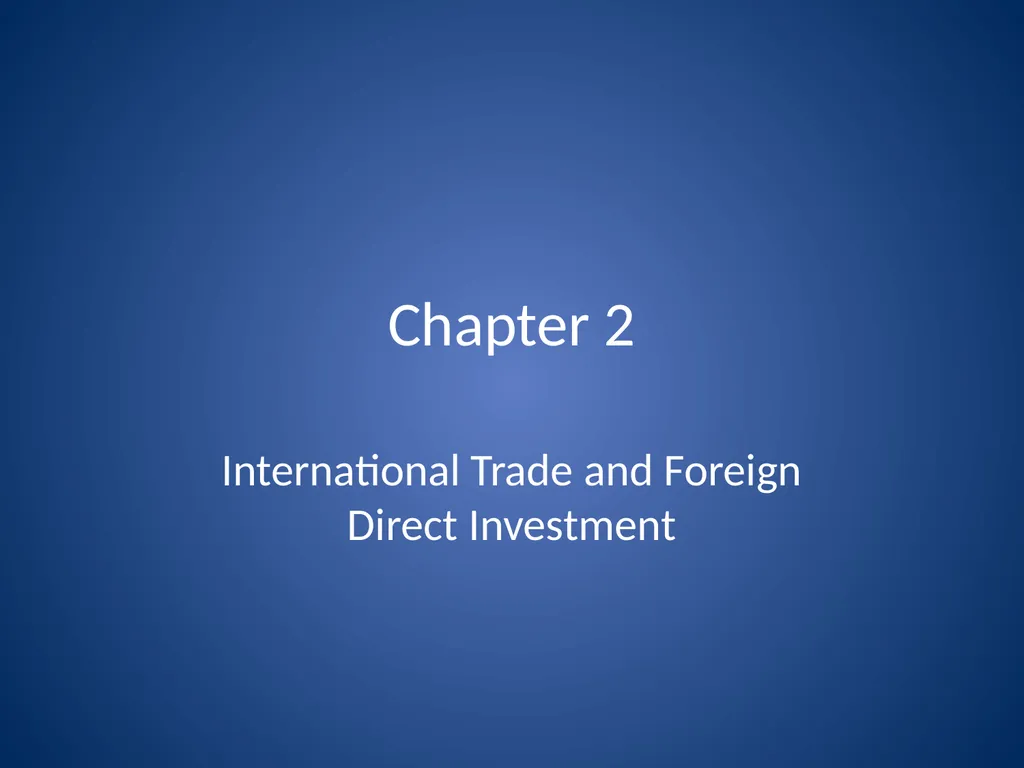Chapter 2 International Trade and Foreign Direct
Author : jane-oiler | Published Date : 2025-05-24
Description: Chapter 2 International Trade and Foreign Direct Investment Major Points of Theories of International Trade Mercantilism Governments should control foreign trade by establishing economic policies that promote exports and stifle imports
Presentation Embed Code
Download Presentation
Download
Presentation The PPT/PDF document
"Chapter 2 International Trade and Foreign Direct" is the property of its rightful owner.
Permission is granted to download and print the materials on this website for personal, non-commercial use only,
and to display it on your personal computer provided you do not modify the materials and that you retain all
copyright notices contained in the materials. By downloading content from our website, you accept the terms of
this agreement.
Transcript:Chapter 2 International Trade and Foreign Direct:
Chapter 2 International Trade and Foreign Direct Investment Major Points of Theories of International Trade Mercantilism Governments should control foreign trade by establishing economic policies that promote exports and stifle imports, generating a trade surplus. Theory of Absolute Advantage (Smith) It suggests that countries differ in their ability to produce goods efficiently. As such, a nation should specialize in the production of the goods in which it is most efficient. The resulting surplus in these goods could be traded to obtain the products that could not be produced advantageously. Theory of Comparative Advantage (Ricardo) It suggests that if a nation were less efficient in the production of two products, it could still gain from international trade if it were not equally less efficient in the production of both goods by specializing in the product that is most efficient. Major Points of Theories of International Trade Differences in Resource Endowments (Heckscher-Ohlin) Smith’s and Ricardo’s theories considered labor as the only important factor in calculating production costs and no thought was given to the possibility of producing the same goods with different combinations of factors (note: the book considers as input a combination of labor, capital, and land in the description of the theories). The Heckscher-Ohlin theory suggests that the pattern of international trade is determined by differences in factor endowments. Some countries have more abundant resources than others that can result in different opportunity cost of producing these resources and bringing them to market. Therefore, it predicts that countries will export the goods in which there are abundant factors of production and will import goods that use locally scarce factors. Overlapping Demand (Linder) Consumers’ taste, preferences, and their nation’s per capita income affect market demand in any country. Customers in countries with similar levels of per capita demand will demand similar goods and services. Major Points of Theories of International Trade International Product Life Cycle (Vernon) It suggests that the pattern of trade is influenced by the location where the product is introduced. It is helpful in the analysis of a product’s export potential and may help to predict which products are in danger from import competition. According to this theory, many products pass through four stages: (a) Developed nation exports, (b) beginning of foreign production, (c) foreign competition in export markets, (d) import competition in home markets. Economies of Scale and the Experience Curve (New Trade Theory) It states that














